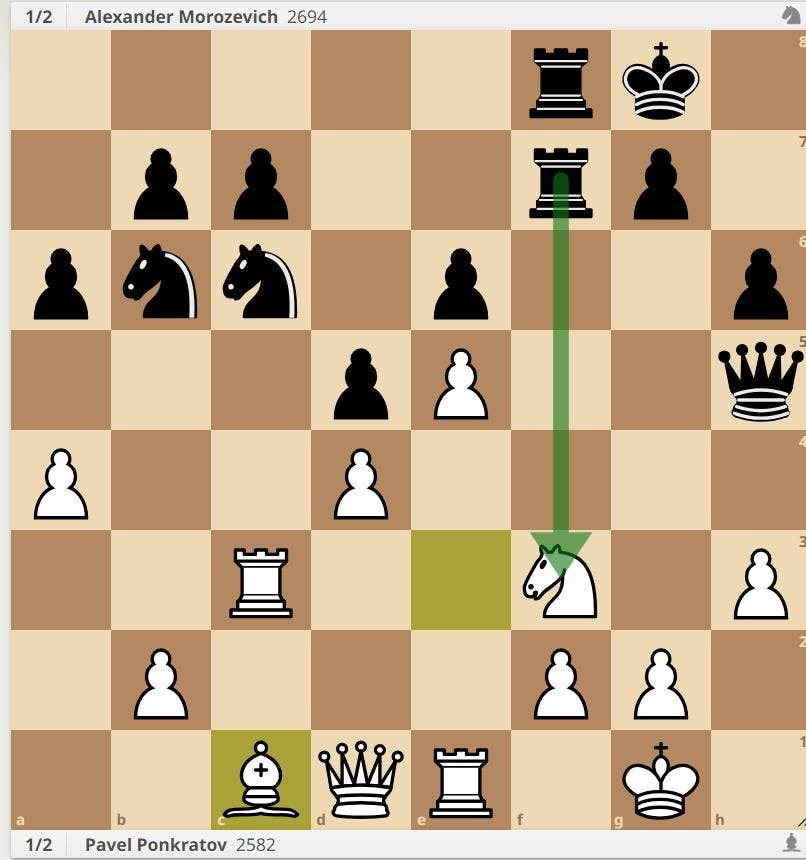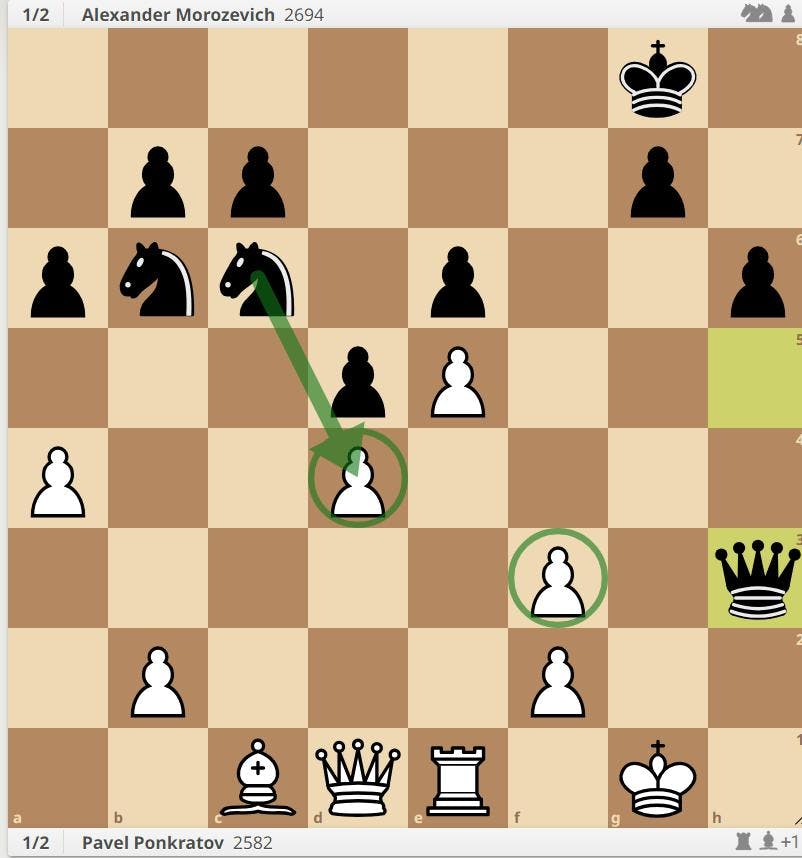
1. Giving up rook for knight

2. The resulting damage
The trading of a rook for a knight or bishop and compensation. Compensation resulting from an exchange sacrifice can take various forms, such as an initiative, or enduring damage to the opponent's pawn structure, or increased control of a colour complex, or a combination of any of these things.
In position 1 (Ponkratov - Morozevich, 2011), black plays perhaps the most typical kind of exchange sacrifice, inflicting long-term damage to white's pawns. After 21... Rxf3! 22. RxR RxR 23. gxf3 (an exchange of queens after 23. Qxf3 QxQ 24. gf would leave white with a difficult ending where the black knights could pick the pawns off at will) Qxh3 white was left with a difficult defence (position 2). However, owing to his 'bad' bishop on c1 being able to protect his weak pawn on d4, white nevertheless managed to draw.
A willingness to sacrifice the exchange is one of the qualities that separates a master from a lower-rated player.
See: 'Blockade' and 'Space advantage' for examples of less common exchange sacrifices.
